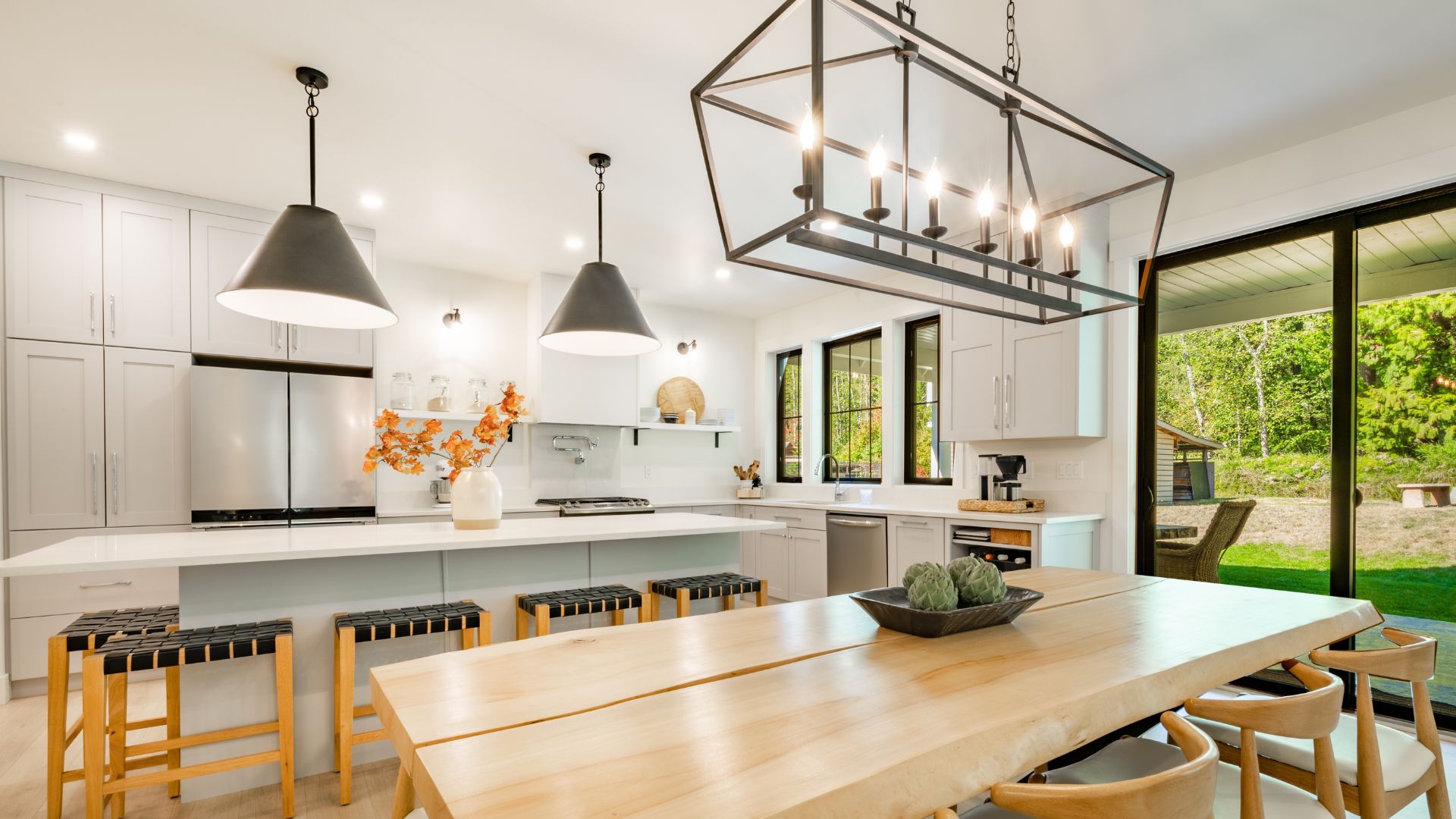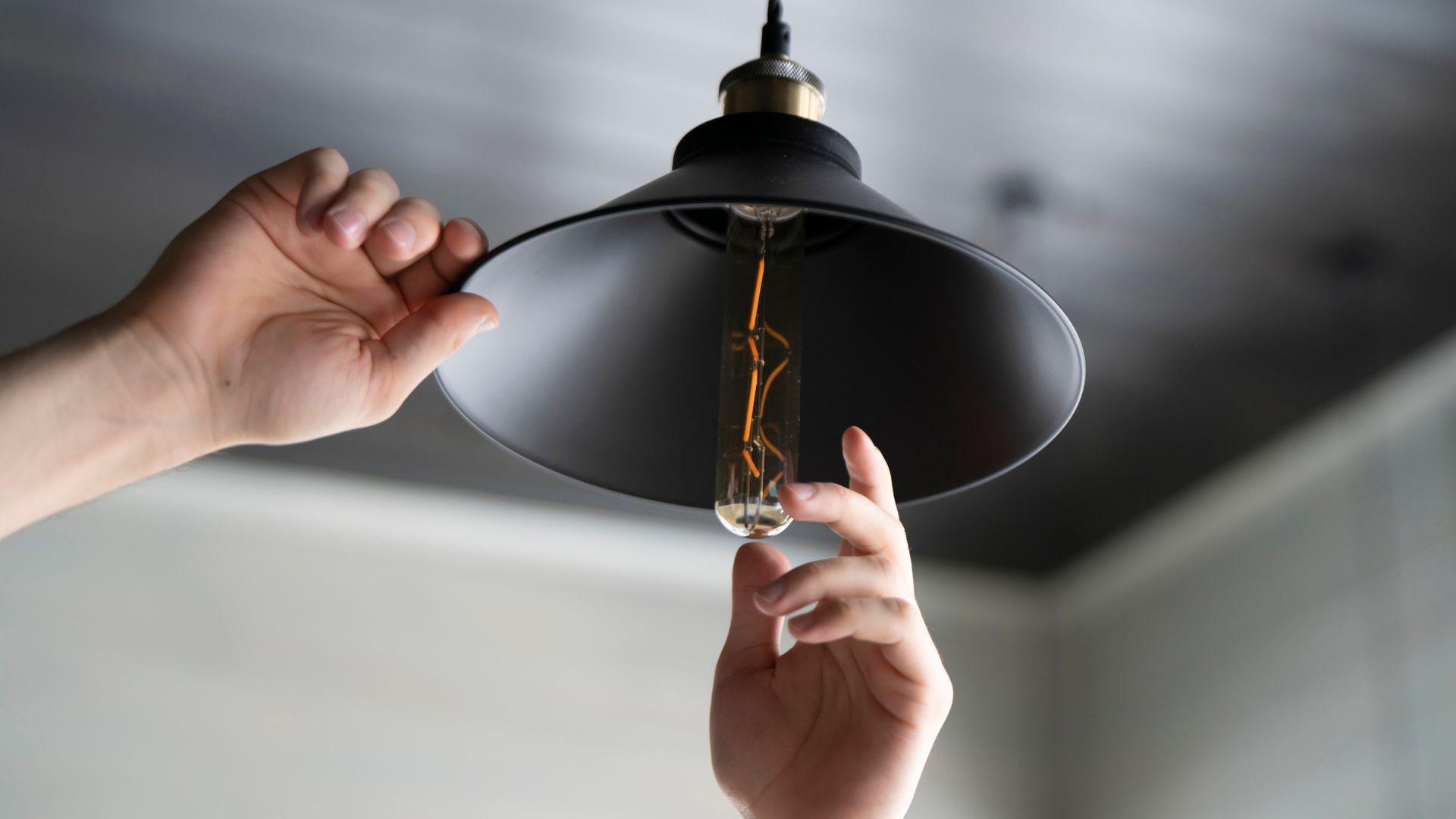Illuminating Your Home: A Guide to Lighting Design

Lighting is a fundamental aspect of interior design that profoundly impacts the ambiance, functionality, and aesthetics of a space. The right lighting can transform a room, highlight its best features, and create the desired mood. In this blog, we explore the importance of lighting in interior design, creative lighting solutions, choosing the right fixtures for each room, and how to layer lighting for different moods.
1. The Importance of Lighting in Interior Design
Lighting is crucial in interior design for several reasons:
Enhances Aesthetics:
Good lighting accentuates architectural features, colors, and textures, bringing out the best in your interior design.
Sets the Mood:
Different lighting can evoke various emotions and moods. Warm lighting creates a cozy and inviting atmosphere, while cool lighting feels energizing and modern.
Improves Functionality:
Proper lighting ensures that spaces are functional and safe. Task lighting in the kitchen or office, for example, improves visibility and reduces eye strain.
Creates Depth and Dimension:
Layered lighting can add depth to a room, making it feel more dynamic and interesting. It can highlight focal points and create shadows that add dimension.
Influences Perception of Space:
Lighting can make a room feel larger, smaller, more intimate, or more expansive, depending on how it’s used.
2. Creative Lighting Solutions
Here are some creative lighting ideas to elevate your home:
Statement Chandeliers:
Use chandeliers as focal points in living rooms, dining rooms, or entryways. They add drama and elegance.
Pendant Lights:
Hang pendant lights in groups over kitchen islands, dining tables, or in bedrooms to create visual interest and focused illumination.
Under-Cabinet Lighting:
Install under-cabinet lights in the kitchen for both functional task lighting and an ambient glow.
Wall Sconces:
Use wall sconces to add sophistication and save space in hallways, bathrooms, and bedrooms.
Floor Lamps:
Add floor lamps to reading nooks, living rooms, or bedrooms for versatile and stylish lighting.
LED Strip Lights:
Place LED strip lights under shelves, behind TVs, or along staircases for a modern and subtle glow.
Smart Lighting:
Incorporate smart bulbs and fixtures that can be controlled remotely and customized for different scenes and moods.

3. Choosing the Right Light Fixtures for Each Room
Selecting the appropriate light fixtures for each room enhances both functionality and style:
Living Room:
Ceiling Lights:
Use a combination of overhead lights, such as chandeliers or flush mounts, for general illumination.
Table and Floor Lamps:
Provide task lighting for reading and accent lighting to create cozy corners.
Accent Lighting:
Highlight artwork, architectural features, or decorative objects with spotlights or wall sconces.
Kitchen:
Recessed Lighting:
Ensure even, general lighting with recessed lights.
Pendant Lights:
Hang pendants over the island or breakfast bar for task lighting and style.
Under-Cabinet Lights:
Install under-cabinet lighting to illuminate countertops and enhance functionality.
Bedroom:
Ceiling Fixtures:
Use ceiling fixtures like chandeliers, flush mounts, or semi-flush mounts for overall illumination.
Bedside Lamps:
Place table lamps or wall-mounted sconces on either side of the bed for reading and ambiance.
Accent Lighting:
Add a touch of luxury with LED strip lights under the bed or in the closet.
Bathroom:
Vanity Lights:
Install sconces or a light bar around the mirror for even, shadow-free lighting.
Ceiling Lights:
Use recessed or flush-mount fixtures for general lighting.
Accent Lighting:
Consider adding a small chandelier or pendant for a touch of glamour.
Home Office:
Desk Lamps:
Ensure focused task lighting with adjustable desk lamps.
Overhead Lighting:
Use recessed lights or ceiling fixtures for general illumination.
Ambient Lighting:
Add a floor lamp or wall sconces to create a balanced lighting environment.


4. How to Layer Lighting for Different Moods
Layering lighting involves combining different types of lighting to achieve a versatile and dynamic atmosphere:
Ambient Lighting:
Provides overall illumination and sets the general mood of a room. Use ceiling fixtures, chandeliers, recessed lights, or large floor lamps for this purpose.
Task Lighting:
Focuses light on specific areas where activities such as reading, cooking, or working take place. Desk lamps, under-cabinet lights, and pendant lights are ideal for task lighting.
Accent Lighting:
Highlights specific features like artwork, plants, or architectural elements. Use spotlights, wall sconces, or LED strip lights for accent lighting.
Decorative Lighting:
Adds style and personality to a space. This can include statement chandeliers, unique pendant lights, or artistic table lamps.
Tips for Layering Lighting:
- Combine ambient, task, and accent lighting to create a balanced and flexible lighting scheme.
- Use dimmers to adjust the intensity of lights and set different moods.
- Mix different light sources and fixtures to add depth and interest.
- Consider the room’s function and design when planning your lighting layers.
Conclusion
Lighting is an essential element of interior design that significantly impacts the look and feel of your home. By understanding the importance of lighting, exploring creative solutions, choosing the right fixtures for each room, and mastering the art of layering lighting, you can create a beautifully illuminated space that is both functional and aesthetically pleasing. Embrace the power of light to transform your home and enhance your living experience.
